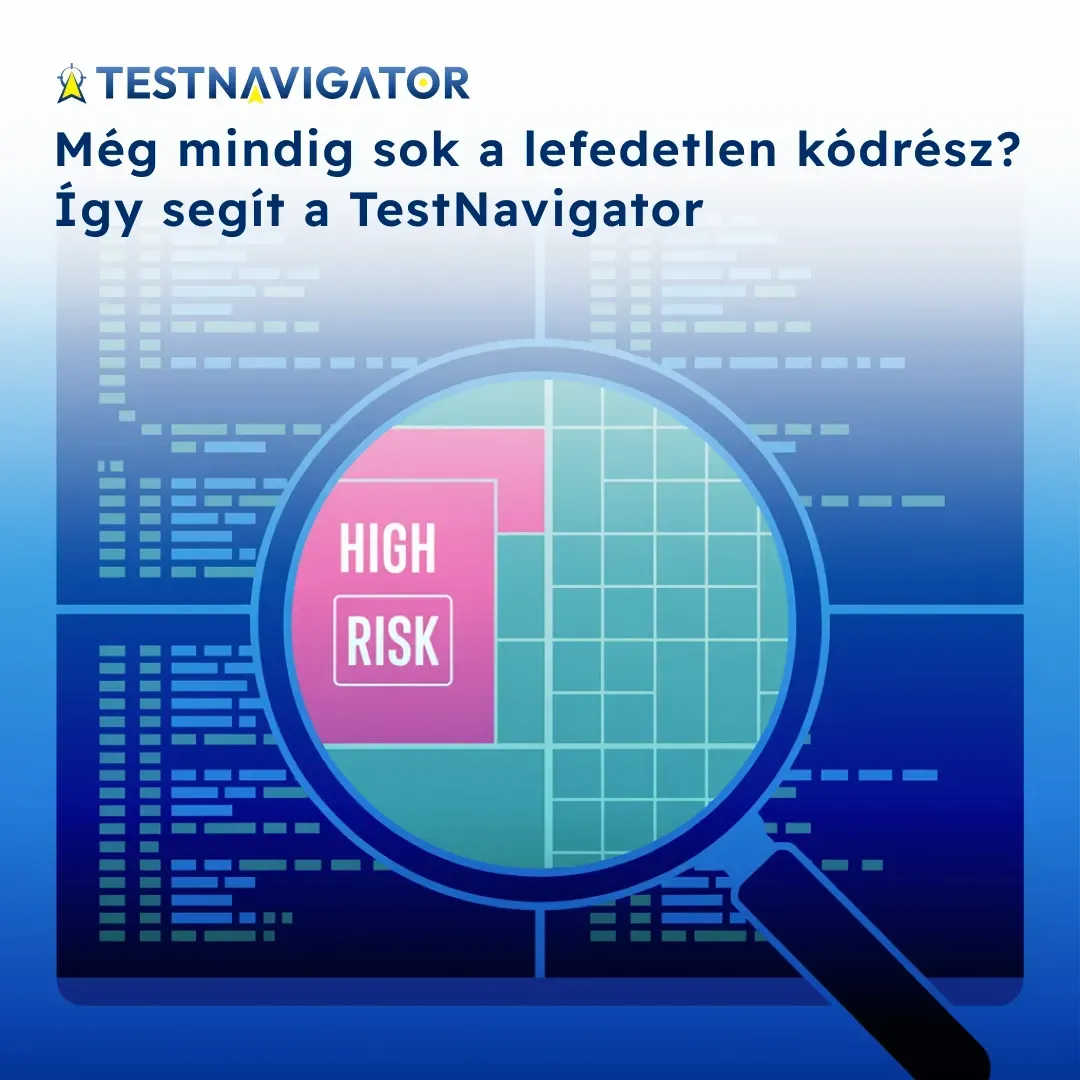
More than just a percentage
Ensuring the reliability and stability of code is crucial in software development. The higher the level of test coverage, the lower the chance of hidden errors. But what exactly does this mean, and why is it so important to measure? In this article, we present the most important techniques, common challenges, and how TestNavigator can help with all of this.
What is code coverage and why is it important to measure it?
Code coverage shows what portions of the codebase are covered by tests and what percentage of changes compared to the previous version were affected. It also helps identify which areas haven’t been tested at all.
Regular test coverage measurement allows for continuous tracking of testing efficiency and helps reveal if a new development was left out of testing. TestNavigator is especially useful in this regard, as it measures the actual functionality covered by testers – not just the theoretical state in a development environment.
Another advantage is the identification of bugs before deployment, catching issues during testing rather than in production. This helps avoid emergency fixes and unexpected costs. Testing also becomes more targeted and transparent – revealing not just that tests ran, but whether they covered the application’s critical components. Test coverage reports make the development process more transparent. At a glance, they show where gaps exist and which areas still require testing.
Most common measurement techniques
Coverage can be measured at multiple levels, providing various perspectives on what parts of the software were actually tested. Line coverage shows what percentage of the code lines were executed during testing. For example, if a file contains 100 lines of code and 75 were executed at least once, line coverage is 75%.
Branch coverage checks that all possible paths in conditionals (e.g., both "true" and "false" outcomes of an if statement) has been executed at least once. This is crucial because defects often hide in one of the branches that simple coverage would not reveal.
Finally, function (or method) coverage indicates how many of the functions or methods defined in the code were invoked by the tests. This helps assess whether the logical units of the program were actually active during testing or left untouched.
Challenges in measuring code coverage
In large codebases, it is particularly difficult to obtain an accurate picture of which code segments are truly covered by tests. Although most coverage tools rely on similar technical approaches, it makes a significant difference whether measurement happens at the source code level or based on the behavior of a running system. This distinction fundamentally affects the interpretation and practical value of the resulting data.
Developer-oriented coverage measurements can be easily integrated into CI/CD pipelines and are usually fully automated. The situation changes, however, when the goal is not to analyze source code statically but to determine what has actually been tested in a live, running system. This approach requires different technical solutions, often involving manual steps – but it provides a far more realistic picture of the system’s true state.
How TestNavigator helps?
TestNavigator is more than a traditional coverage measurement tool – it provides real-time insights and feedback during the testing process. The system can automatically measure code coverage at the method or branch level and presents the results in an intuitive visual format that highlights untested areas.
Efficient test case prioritization
One of TestNavigator’s unique strengths lies in its innovative test selection algorithm, which recommends the test cases to execute before a release. The TA Score algorithm identifies the subset of tests that are most relevant for verifying the functionalities affected by recent code changes.
Why is this important? Achieving full coverage after every change is simply unrealistic for large systems – both in time and cost. Therefore, test selection should be based on data rather than intuition to ensure that all critical modifications are properly validated.
A frequent problem is that the business or management side lacks visibility into how code changes affect functionality - unclear impact, missing release notes, or hidden side effects often complicate feedback loops and inflate testing costs. Moreover, not all tests have equal importance. The algorithm not only selects the necessary test cases but also helps prioritize them.
Overall, a well-designed test selection strategy can yield significant time and cost savings. The Test Advisor Score enhances testing efficiency by considering both the extent and complexity of code changes – ultimately contributing to improved software quality.
Data-driven decision support before release
Code coverage is a key factor in Go/No-Go decisions – determining whether a software version is ready for release. This metric shows what percentage of the source code has been exercised by tests. Typically expressed as a percentage, a higher coverage value indicates broader test reach across the codebase.
By using TestNavigator, teams can accurately assess how thoroughly a given software version was tested before release. The system clearly displays percentage-based coverage levels and highlights untested code areas, helping teams better evaluate release risks. TestNavigator thus supports not only testers and developers but also business decision-makers, enabling transparent, data-driven release management.
Code coverage ≠ Quality
Measuring code coverage is one of the most important practices in modern software development – but measurement alone is not enough. High coverage does not automatically mean high quality. Without coverage data, testing is essentially blind, increasing the risk of bugs and instability.
TestNavigator goes beyond measurement by offering real-time support, test case prioritization, and optimization recommendations. This enables conscious, data-driven testing, minimizing redundant executions while maximizing efficiency. Instead of static reports, TestNavigator provides interactive, continuously updated coverage insights – empowering both development and testing teams to make informed, quality-focused decisions.